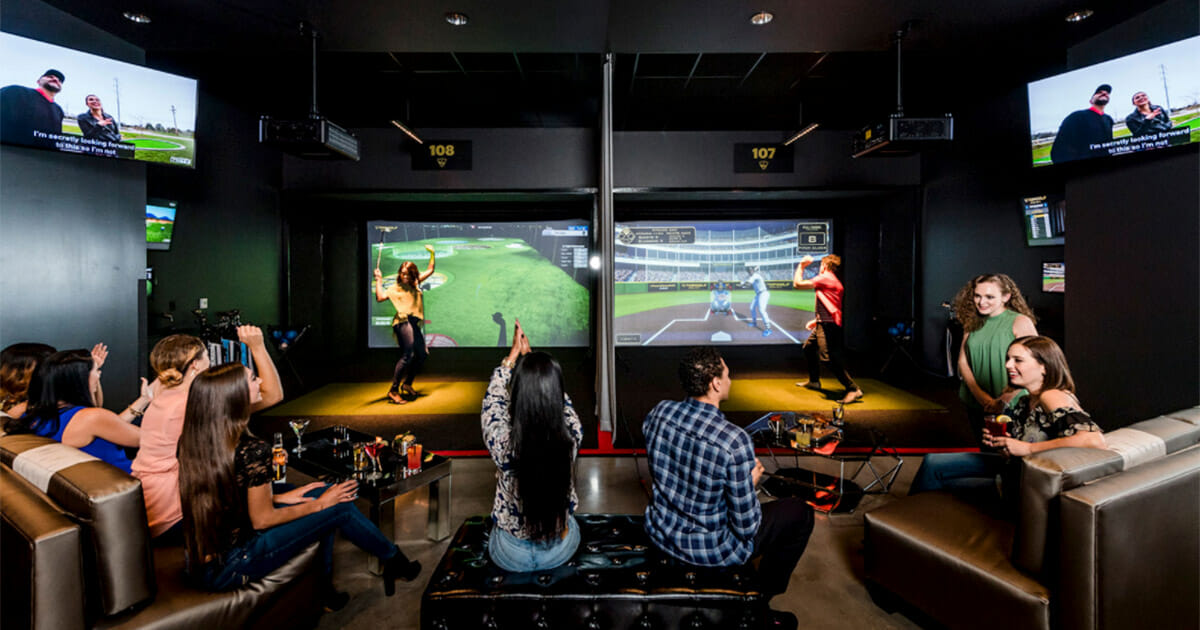Golf simulators have transformed how golfers practice, train, and enjoy the game. These cutting-edge technologies deliver a realistic and immersive experience that mimics the difficulty of playing on some of the world’s most prestigious golf courses. Behind the enthralling virtual greens is a sophisticated combination of cutting-edge hardware and software technologies that combine to produce a realistic golfing experience. In this article, we’ll look at the technology that drives the golf simulator and how it brings the fairways to life.
1. Camera and Sensor Systems
The camera and sensor system is a critical component of golf simulators. These devices are carefully placed around the simulator setup to capture the golfer’s actions and the golf ball’s trajectory. The golfer’s swing, clubhead speed, clubface angle, swing path, and impact position are all tracked by high-speed cameras or modern optical sensors. These real-time data points are critical for gaining important information about a golfer’s technique and stroke performance.
The cameras and sensors work together to correctly trace the golf ball’s path from impact to landing. Because of the sophisticated ball tracking, the simulator’s software can determine characteristics like shot distance, launch angle, ball spin rate, and curvature. As a result, the golf simulator can precisely reproduce the results of each shot on the virtual screen, delivering a realistic and engaging golfing experience.
2. Ball Tracking Technology
Accurate ball tracking is critical to a golf simulator’s overall realism. Golf simulators use advanced radar or infrared ball-tracking equipment to properly follow the ball’s flight path. This technology captures even the slightest details in the golfer’s swing and shot impact, resulting in an accurate virtual screen portrayal of the shot.
The ball tracking data is then sent into the simulator’s software, which conducts sophisticated calculations to predict the trajectory and outcome of the shot. This data-driven approach improves the realism of the golfing experience. It gives players important feedback on their stroke performance, allowing them to find areas for development and refine their abilities.
3. High-Definition Projection Screens
High-definition projection screens provide a lifelike representation of golf courses. These displays serve as the canvas for displaying the virtual golfing scene. Players are immersed in the virtual golf course thanks to the mix of accurate ball tracking data and high-definition visuals.
The projection displays are intended to display colorful and realistic images, such as the golf course’s topography, hazards, and green contours. As the golfer swings, the ball’s trajectory is projected onto the screen, allowing the player to view the shot’s progress in real-time. This visual input is critical for golfers to learn how different aspects, like swing mechanics and shot impact affect their performance.
4. Simulator Software
The software is at the heart of any golf simulator. The simulator software is a complex program that analyzes camera, sensor systems, and ball-tracking technology data. Based on the golfer’s swing data and the impact on the ball, the software runs complicated algorithms to compute the ball’s flight path and the shot’s outcome.
In addition to ball flight calculations, the program considers wind speed, course conditions, and ball spin rate to simulate realistic shot results. The simulator’s software has an easy-to-use interface allowing users to easily browse course options, alter parameters, and evaluate performance data.
5. Course Database
Golf simulators have a large database of real-world golf courses to enhance the golfing experience. These courses’ landscapes, fairways, bunkers, water hazards, and green layouts are faithfully replicated. Golfers may virtually explore and play on some of the most famous golf courses in the world, all from the comfort of a simulator setup.
Including prominent golf courses in the simulator’s database enhances the golfing experience by adding excitement and diversity. Golfers may only test their talents on these legendary courses after leaving the simulator, whether it’s teeing off at St. Andrews, negotiating the hazardous fairways of Pebble Beach, or playing the difficult holes at Augusta National.
6. Integration of Golf Clubs
Golf simulators include genuine golf clubs outfitted with specific sensors to provide a lifelike experience. These sensors collect data during each swing, providing precise feedback on the golfer’s swing mechanics, club head speed, and ball impact. Using genuine golf clubs guarantees that players may practice with their equipment, helping them to transition from in-game to real-world play effortlessly.
The simulator’s software analyzes data from the connected golf clubs to offer quick feedback on the golfer’s technique and stroke accuracy. This real-time feedback enables golfers to change their swing and enhance their overall performance.
7. User Interaction and Interface
User interaction and interface design are important factors in improving the overall experience of golf simulators. The simulator’s software has an easy-to-use interface that allows users to easily pick courses, alter parameters, and evaluate performance data. The user-friendly design allows golfers to focus only on the game, making the simulator experience pleasurable for players of all ages and ability levels.
Conclusion
Golf simulators are an amazing combination of powerful hardware and software technology. Combining camera and sensor systems, ball tracking technology, high-definition projection displays, and user-friendly software results in a distinctive virtual golfing experience. Golf simulators are poised to play a major role in influencing the future of golf, making the sport more engaging, accessible, and pleasurable for lovers of all ages as technology advances. A golf simulator provides a realistic and accessible route to experience the delight of golfing on some of the world’s most renowned courses, whether you are a seasoned golfer trying to fine-tune your abilities or a beginner eager to learn the game.



